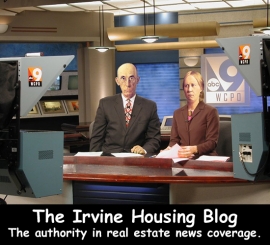A recent article in the LA Times expresses opinions of the fates of several key cities where the housing bubble fully burst.

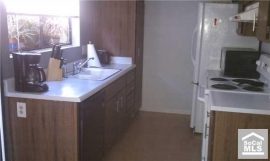
Irvine Home Address … 97 STREAMWOOD Irvine, CA 92620
Resale Home Price …… $209,900

I know you feel these are the worst of times
I do believe it's true
When people lock their doors and hide inside
Rumor has it it's the end of Paradise
But I know, if the world just passed us by
Our memories of yesterday will last a lifetime
We'll take the best, forget the rest
And someday we'll find these are the best of times
These are the best of times
Styx — The Best of Times
When the housing bubble burst, it was the worst of time for loan owners and speculators, and it was the best of times for buyers and cashflow investors. Some cities and regions have dropped precipitously, and to the degree these areas were dependent upon homebuilding and construction is the degree to which they are suffering today. Some of these cities will come back. Some will not.
Housing bust creates new kind of declining city
A study says cities where home prices have fallen the most — including Riverside, San Bernardino and Fresno — could suffer long-term deterioration similar to that of the Rust Belt.
January 06, 2011 — By Alejandro Lazo, Los Angeles Times
In the Inland Empire and other former home-building hot spots, the housing bust has created a new kind of declining city, different from the nation's traditional rusting centers of industry, that could languish for years.
Although the causes of the decline in these metropolitan areas are distinct from the loss of employment from shrinking manufacturing and industry in some of the nation's old industrial powerhouses, these areas could experience fates similar to places such as Cleveland and Detroit, with neighborhoods experiencing high rates of vacancies for a very long time, according to a study to be released Thursday.
“Some neighborhoods are going to suffer tremendously or are never going to come back or come back very, very slowly,” said James R. Follain, senior fellow at the Rockefeller Institute of Government and author of the study published by the Research Institute for Housing America, a division of the Mortgage Bankers Assn.
I wrote about this same phenomenon in Ireland last May: Ghost Estates: Twenty Percent of Ireland’s Houses Are Vacant.
The long-term health of any housing market linked to the local economy. In areas where jobs are scarce and low paying, prices are low. California witnessed wage growth in excess of national norms for many years. This wage growth stimulated household formation and new home construction, and it made house prices go up faster than in other areas of the country. As a result, California home owners believe their house prices are destined to always rise faster than prices anywhere else.
Potential candidates for long-term decline named by the study are the areas hit hardest by the drop in home prices in recent years. They include several inland California metropolitan areas that grew rapidly during the boom, including Stockton, Modesto, Fresno, Riverside and San Bernardino. Las Vegas and Miami also made the list.
Las Vegas house prices will take forever to get back to the peak. Prices there are currently far below fundamental valuations, and some houses in some neighborhoods will need to triple in value to regain their 2006 stature.
Far from being a problem, the low house prices will be a huge boom to the city as workers can take lower paying jobs and live more comfortably than their counterparts in other areas. Timing does matter (a great old read).


A traditional city in decline is one that has suffered a sustained population drop, leaving behind empty houses, apartment buildings, offices and storefronts. Cleveland and Detroit, for instance, suffered from the erosion of manufacturing and the loss of residents, who left in search of jobs.
Instead of eroding a particular industry, however, the housing bust left a glut of homes because of overbuilding and the foreclosure crisis. Follain argues that the future of these cities is threatened in similar ways to that of Rust Belt cities.
“Long-vacant neighborhoods are going to develop, and we can imagine what can happen,” he said, including potentially higher crime and lower property taxes.
In California, some coastal cities already are seeing a housing market recovery. But inland areas that were built on optimistic assumptions of continued population growth and ever-climbing home values are facing a much more difficult recovery.
Any coastal market recovery is an illusion. The coastal markets are still going to get their comeuppance. Every market was subject to optimistic assumptions about house prices. Some markets have crashed and are nearing recovery whereas some markets have not crashed yet.
Celia Chen, a housing economist with Moody's Economy.com, predicts that a full recovery in parts of California, Nevada, Arizona and Florida won't occur until 2030.
“The housing boom elevated home prices in a number of areas far, far above what can be supported by the economic fundamentals, and so prices have fallen significantly, and they will remain below their previous peaks easily for a decade, or even two decades,” Chen said.
Yes, since house prices had no real reason to be so high in 2006, it probably will take until 2030 in some markets for sustained economic growth to bring wages in line with 2006 house prices.
Some experts contend that foreclosures, which have pierced neighborhoods of all income levels throughout the country, are quickly turning developments on the outskirts of metropolitan areas into the nation's newest slums. Complicating any recovery for these beaten-down areas is the difficulty in predicting which neighborhoods will fare worst. That uncertainty could lead to increasing skepticism by buyers and lenders looking to make loans on homes in these areas.
“If you are looking at this from the perspective of a home buyer or a lender, it is one thing to say you are in a market where home prices may drop 10% or 20%.” said Michael Fratantoni, vice president of research and economics with the mortgage bankers group. “That is different from the idea that 80% to 90% of the value could evaporate. That changes the whole nature of the business.”
Changes the whole nature of the business? You mean, there is risk in lending on real estate? Is there risk in buying real estate too?
Many foolishly believed that the very real risks markets face did not exist. Real estate only goes up. You can always refinance. Interest rates always go down. Both borrowers and lenders need to understand this reality if these transactions are going to occur in a stable environment. If nobody believes they have any risk, they behave in ways that inflates bubbles.
Still, the future of these regions remains a point of contention. Economist John Husing argues that the inland regions of California don't have a long-term problem.
“What has driven the Inland Empire economy is, for the last 30 years, simply the fact that the rest of Southern California is completely out of dirt,” Husing said. “Right now the price differential between coastal counties and inland counties is $100,000. People will ultimately respond to that.”
Yes, the substitution effect will stimulate demand in Riverside County and drag Orange County prices lower.
The development of industrial facilities to handle cargo from Southern California's ports will also continue inland because they require lots of space, said Husing, principal of Economics & Politics Inc. in Redlands. Such development, he said, will create jobs for workers who will need housing.
alejandro.lazo@latimes.com
Has the low end appreciated since early 2009?
Housing markets crumble from the bottom up, but they also stabilize from the bottom up too. The people who buy the bottom of the housing ladder at the bottom of the market have equity they can take with them to bid up prices in the next rung of the property ladder. This unit is the bottom of the Irvine property ladder — which actually says a lot for Irvine. If this is the worst Irvine has to offer, things are pretty good here.T
The owner of today's featured property paid $188,000 on 5/18/2009. He is asking enough to pay the realtor plus make 5% or at least give himself some room to negotiate.
Of course, this brilliant plan requires a willing buyer to play along. Is someone going to step forward and pay a higher price for this unit today?


Irvine Home Address … 97 STREAMWOOD Irvine, CA 92620 ![]()
Resale Home Price … $209,900
Home Purchase Price … $188,000
Home Purchase Date …. 5/18/09
Net Gain (Loss) ………. $9,306
Percent Change ………. 5.0%
Annual Appreciation … 6.3%
Cost of Ownership
————————————————-
$209,900 ………. Asking Price
$7,347 ………. 3.5% Down FHA Financing
4.79% …………… Mortgage Interest Rate
$202,554 ………. 30-Year Mortgage
$42,429 ………. Income Requirement
$1,062 ………. Monthly Mortgage Payment
$182 ………. Property Tax
$0 ………. Special Taxes and Levies (Mello Roos)
$35 ………. Homeowners Insurance
$242 ………. Homeowners Association Fees
============================================
$1,520 ………. Monthly Cash Outlays
-$99 ………. Tax Savings (% of Interest and Property Tax)
-$253 ………. Equity Hidden in Payment
$13 ………. Lost Income to Down Payment (net of taxes)
$26 ………. Maintenance and Replacement Reserves
============================================
$1,208 ………. Monthly Cost of Ownership
Cash Acquisition Demands
——————————————————————————
$2,099 ………. Furnishing and Move In @1%
$2,099 ………. Closing Costs @1%
$2,026 ………… Interest Points @1% of Loan
$7,347 ………. Down Payment
============================================
$13,570 ………. Total Cash Costs
$18,500 ………… Emergency Cash Reserves
============================================
$32,070 ………. Total Savings Needed
Property Details for 97 STREAMWOOD Irvine, CA 92620
—————————————————————————— 
Beds: 1
Baths: 1 bath
Home size: 639 sq ft
($328 / sq ft)
Lot Size: 690 sq ft
Year Built: 1977
Days on Market: 2
Listing Updated: 40555
MLS Number: S643991
Property Type: Condominium, Residential
Community: Northwood
Tract: Is
——————————————————————————
Charming and Peaceful lower end unit, 1 Bedroom, 1 Bath, with Beautiful views from Dining, Kitchen, and Bedroom. The sounds of the creek right outside your windows. Spacious Patio. North facing unit across from laundry and assigned carport with storage. New carpeting and light maple wood laminate floors. Freshly painted. Community Pool, spa, BBq's, tennis courts. Close to award winning schools. Walk to stores and shopping center.
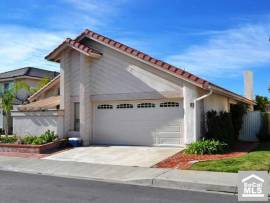












.jpg)

.jpg)

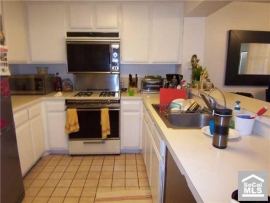








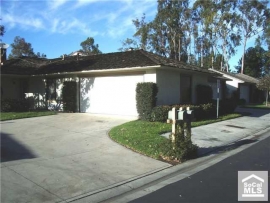
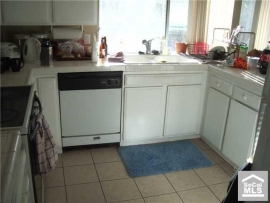


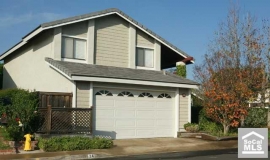


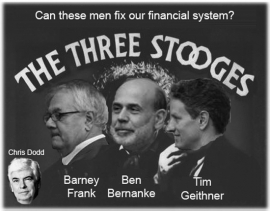












 I know this stuff is a bit wonkish, but it is good information to know. We will see these guys pontificate in debates over the next 18 months on the fate of the GSEs. Don't underestimate the importance of the GSEs to the housing market. Most middle-class mortgages are GSE insured. High wage earners often borrow from a jumbo loan lender because their loans exceed the $729,750 loan limit at the GSEs and FHA.
I know this stuff is a bit wonkish, but it is good information to know. We will see these guys pontificate in debates over the next 18 months on the fate of the GSEs. Don't underestimate the importance of the GSEs to the housing market. Most middle-class mortgages are GSE insured. High wage earners often borrow from a jumbo loan lender because their loans exceed the $729,750 loan limit at the GSEs and FHA.


